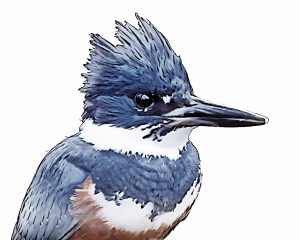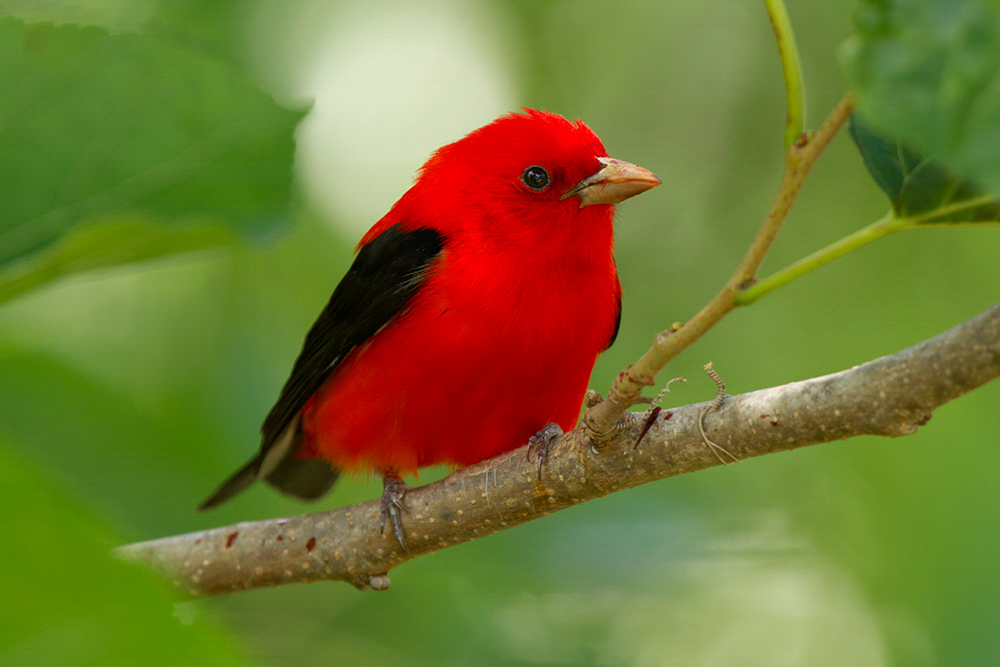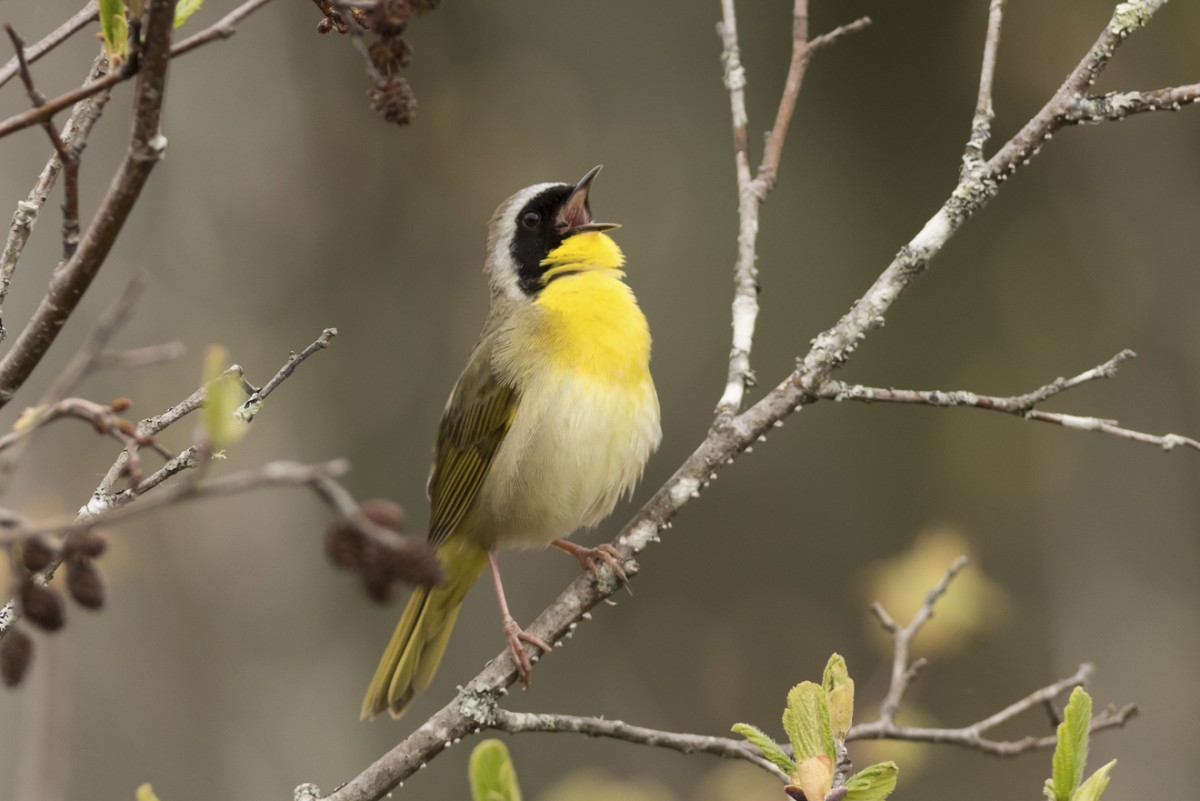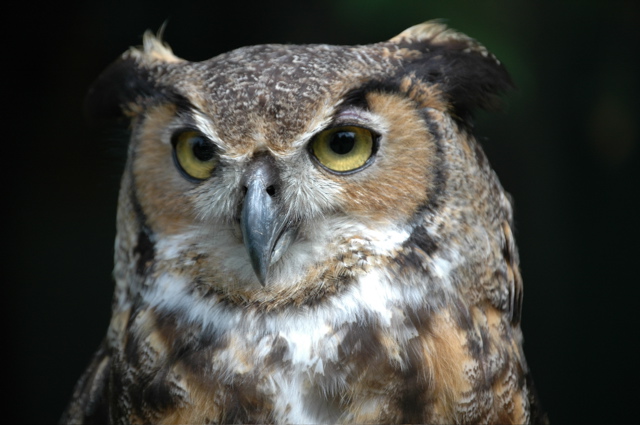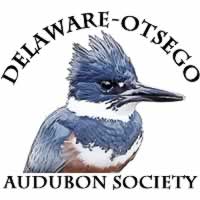November 2008
Public review of gas drilling underway —
The NY State Dept. of Environmental Conservation has begun the State Environmental Quality Review process for updating its Generic Environmental Impact Statement (GEIS) for natural gas exploration and production in the state. The update is necessary to consider the potential impacts of horizontal drilling and high-volume hydraulic fracturing to develop gas from the Marcellus shale formations underlying much of central NY State.
The “hydro-fracking” well production technique requires large quantities of water with chemical additives to be forced underground with high pressure to fracture the shale and release trapped gas.
Presently DEC has a draft scoping document out for review by the public. This outlines the issues and concerns to be covered in the update. It is important to ensure that all possible threats to the environment are included in the scope. Among the known dangers are contamination of groundwater by hydro-fracking water, storage of returned water and additional contaminants from the wells, withdrawal of water from aquifers and surface water bodies, and fragmentation of habitat for drilling operations and transmission pipelines.
The scoping document does not specifically address dangers to wildlife, except threatened and endangered species. However, if drilling wastes are stored in open pits, as is currently allowed for natural gas exploration in the state, the mix of heavy metals, oils, surfactants and other substances certainly poses a threat to waterfowl, shorebirds and other wildlife. Ideally these liquids would be stored in closed tanks, but there is no guarantee this will be required.
What you can do —
The draft scoping document is available here. A public hearing on the scope will be held Dec. 2 in SUCO’s Hunt Union Ballroom, starting at 5:15 pm., with public comments at 6 pm. In addition, comments can be submitted by mail to : Bureau of Oil & Gas Regulation, NYSDEC Division of Mineral Resources, 625 Broadway – Third Floor, Albany, NY 12233-6500, Attn: Scope Comments; or by email with “Scope Comments” as the subject.
Following finalization of the scope, a draft supplemental GEIS will be prepared, and put out for public comment before a final document is completed. DEC anticipates the process to be finished by Spring, 2009, and regulations for hydro-frack horizontal drilling to be promulgated shortly after that.
Migratory birds need help —
As we birders are well aware, the amazing phenomenon of bird migration is again underway. Each spring, millions of birds travel thousands of miles from Latin America and the Caribbean to their breeding grounds in North America. And now, as the temperature drops and winter sets in, these migrants make the long trip back to warmer souther climates. Migration has long fascinated and inspired its human observers.
Among the most special and appealing birds to us are the neotropical migrants — those that breed in North America and spend the winter months in the tropics. These are among the most attractive and interesting to us as birdwatchers. But over 300 species of neotropical migratory birds face increasing threats: loss of migration stopover habitat, disease, climate change, and large scale deforestation and other habitat alteration on their wintering grounds.
Since these birds know no borders, international efforts for conservation are critical. To safeguard neotropical migratory birds, they need protection all along their migration routes. The United States has supported efforts throughout the Americas to foster cooperation in the protection of migratory birds, particularly through the Neotropical Migratory Bird Conservation Act (NMBCA). This law provides an innovative, cost-effective approach to bird conservation, supporting projects to benefit bird populations and their habitats, research and monitoring, law enforcement, and outreach and education throughout Canada, the US, Latin America and the Caribbean.
Many bird species such as “our” Wood Thrush, Baltimore Oriole, and Yellow Warbler have been helped by the NMBCA. The law uses a matching grant program to utilize funding from non-government sources. Since the program began in 2002, the US has invested more than $25 million in 262 projects in 44 US states, Canada, and 33 Latin American and Caribbean countries, leveraging an additional $112 million in partner funds to support these projects. Its potential reach is even greater: each year, grant requests from qualified applicants far exceed the program’s available funding. In 2008, for example, the US Fish and Wildlife Service received a total of nearly $14 million in grant requests, but was only able to award $4.4 million.
What you can do —
Legislation to reauthorize the NMBCA and increase its funding has been introduced in the US House of Representatives. Write your Representative and urge them to co-sponsor HR 5756 to provide a much-needed increase in vital conservation dollars. Let them know that migratory birds are important to you and that our nation has an obligation to ensure their well-being within our borders and beyond.
Good news for boreal birds from Canada —
Ontario, Canada made a major commitment to the environment this summer, with the announcement of its intention to set aside half the province — about 55 million acres — for permanent conservation.
This immense area is largely boreal forest — an ecotype rapidly disappearing in Canada and elsewhere due to logging and other resource extraction. This forest land is crucial habitat for many species of birds, particularly neotropical migrants that breed in the region. Coarse estimates of bird numbers in the planned protected area include 2 million Tennessee Warblers, a million Swainson’s Thrushes, and 5 million juncos, to name a few. In addition, protection of the vast forest lands will maintain an important carbon sink. It is estimated that 12.5 million metric tons of carbon are absorbed each year.
The conservation initiative announced by Ontario Premier Dalton McGuinty also requires resource industries to work with the government and native First Nations communities to create sustainable development plans for the balance of the province’s land. Over the next 10 to 15 years, the province will work with scientists and communities to map out the specific lands that are the most valuable as carbon storehouses and for species protection and which lands have the greatest resources and should be developed. This is a great commitment to environmental protection and a model for other undeveloped lands in North America and beyond.
What you can do —
Write Premier McGuinty and thank him and the province of Ontario for this forward-looking act: Legislative Building, Queen’s Park, Toronto, ON M7A 1A1 or at his website . For further information on this issue, visit the Boreal Songbird Initiative.
Possible movement on Better Bottle Bill —
Recent leadership changes in the NY State Senate many bode well for the long-stalled and overdue update of NY’s returnable container law. Legislation to add water, juice, sports drinks, etc. to the soda and beer that presently require a deposit is well-supported across the state, and even in the state legislature. However, the bill was always blocked from a vote by Senate Majority Leader Joe Bruno who has close ties to the bottling industry.
In July, Sen. Bruno stepped down from his position and resigned his Senate seat, and was replaced as majority leader by Sen. Dean Skelos of Long Island. Albany environmentalists are cautiously optimistic that Sen. Skelos, who voted for the original deposit legislation, will be less antagonistic towards the Better Bottle Bill, and at least allow the issue to be debated and voted on in the Senate. There have been discussions on compromise on the bill, with the possibility of only including water bottles, and of leaving the millions of unclaimed deposits with the bottlers. Whether this weakening of the legislation is justified is debatable, but the conversation at least indicates a break in the stalemate.
With non-deposit containers making up a larger and larger portion of roadside trash and landfill capacity, this bill is needed more than ever.
What you can do —
Contact Sen. Skelos and ask him to stop the stranglehold on the Better Bottle Bill. Also let our local state senators know that this is important legislation that deserves a vote. During this fall’s campaigns for the state legislature — particularly the closely balanced Senate — ask the candidates if they support expanding the bottle bill.
Addresses: Senate Majority Leader Dean Skelos, NY State Senate, Albany, NY 12247, phone 518-455-3171. (Follow the link below for your local senators.)
Good news on burn barrels —
We have often written here of the health dangers of burn barrels – those smoldering back yard mini-incinerators that are so widespread and common in our rural communities.
The smoke and fumes from burn barrels affect all who breathe them – not just the individuals and families who do the burning. A recent study by the U.S. Environmental Protection Agency, in conjunction with DEC and the State Department of Health, found that emissions of dioxins and furans from backyard burning alone were greater than all other sources combined for the years 2002-04. The study also found that burning trash emits arsenic, carbon monoxide, benzene, styrene, formaldehyde, lead, hydrogen cyanide and other harmful chemicals. Trash containing plastics, polystyrene, pressure-treated and painted wood and bleached or colored papers can produce harmful chemicals when burned.
The seriousness of these toxins is recognized in NY State, and burn barrels are banned in municipalities with populations over 20,000. However, residents of our smaller towns are treated as second class citizens and burning remains legal.
Efforts in the state legislature to ban open burning of trash have always been blocked in the State Senate. However, the Paterson administration has now stepped forward to address the issue. The NYS DEC has proposed rules to prohibit trash burning. If approved, these regulations will bring about cleaner air, less asthma and lung disease, and reduce wildfires.
Exempted from the ban are camp fires, prescribed burns, celebratory bonfires (where allowed), fire training exercises, specialized burning to protect crops from frostbite and burning of agricultural wastes (though not agricultural plastics).
The proposed rules are supported by environmental groups, the American Lung Assoc., and firefighting organizations. However, opposition can be expected from the Farm Bureau and some local governments.
What you can do —
Please consider supporting this long overdue and important change to rid our villages and rural areas of the scourge of burn barrels. A series of public hearings on this proposal is scheduled for June. Closest to our area are:
- Monday, June 23, 2008, 5-8 p.m. – Cortlandville Fire Department, 999 Route 13, Cortland, NY 13045.
- Wednesday, June 25, 2008, 9:30 a.m.-noon; 5-8 p.m. – DEC Central office, 625 Broadway, Public Assembly Room 129, Albany, NY 12233
Written comments can also be submitted to NYSDEC, Division of Air Resources, Attention: Robert Stanton, 625 Broadway, Albany, NY 12233-3254 or by email. Deadline for comments is July 10.
The proposed regulations can be found at www.dec.ny.gov/regulations/43439.html. For more information on the threats of burn barrels, visit www.dec.ny.gov/public/32064.html.
Ups and downs for wolves —
The endangered gray wolf has been through some perilous changes in recent months.
First the Bush administration proposed stripping the protections of the Endangered Species Act for northern Rocky Mountains’ wolves and to turn their management over to the states. Despite overwhelming public opposition, the US Fish and Wildlife Service did just that, effective in March. Wyoming, Montana and Idaho immediately seized the opportunity to implement plans to kill wolves.
Wyoming, for example, put in place its “kill on sight” predator law in nearly 90 percent of the state, and over a dozen wolves were shot in the next few days. Locals have organized wolf eradication weekends where wolves are rounded up and killed. One group tracked a wolf for 35 miles on a snowmobile before killing it. Idaho intends to use planes to track and shoot wolves.
The states’ “management” plans would allow killing of 80% of the wolves in the region. Clearly these animals need continued federal protection.
In late April, twelve environmental groups filed suit against the government’s action. Wolves should not have been delisted, the groups argue, because they remain threatened by biased, inadequate state management plans, as well as by the lack of connections between largely isolated state wolf populations. Meanwhile, wolf killings continue.
What you can do —
Help the groups involved in this legal challenge with a contribution. Among the lead organizations in the fight to protect wolves is Defenders of Wildlife. More information on this effort, including a list of groups that have gone to court, can by found at www.defenders.org. In addition, a petition to the Secretary of the Interior requesting adoption of a national wolf recovery plan can be found here.
Catskill Park State Land Master Plan up for Public Comment —
The NY State Dept. of Environmental Conservation has issued a revision to the draft update of its master plan for management of state lands in the Catskill Park. The original update was put forth in 2003, but following a public comment process has been buried in Albany until now.
The primary sticking point had been mountain biking on the nearly 300,000 acres of state land within the Catskill Park. These Forest Preserve lands are designated as “forever wild” by the NY State Constitution, as are such lands in the Adirondack Park. Previously, biking has been allowed on all trails in all areas of the Forest Preserve, but the first draft update of the master plan prohibited bikes in wilderness areas, which comprised over half of the area.
The current draft seeks to strike a compromise by keeping the ban on wilderness biking, but establishing four bike trail corridors totaling 13 miles in length through wilderness areas. These corridors would follow old roads, with the hope of minimizing disturbance of wildlife, conflicts with other users, and soil and vegetation deterioration. In areas other than wilderness, biking would be permitted on roads and all marked trails unless deemed unsuitable by individual unit management plans.
In addition, the revised plan would establish a new 17,000 acre wilderness area, and increase the existing Hunter – Westkill Wilderness Area to include Hunter Mountain. This is particularly significant since there have been past efforts by the Hunter Mountain ski center to acquire this second highest Catskill peak to expand its facilities. Wilderness designation will add protection to the mountain.
On balance, this appears to be a reasonable accommodation of mountain bikers, providing access, but minimizing their impact in wilderness areas. Expansion of wilderness in the Catskills is a definite plus.
There remain some problem areas in the revised plan, however. In DOAS’s comments on the 2003 version, we noted that there was no discussion of illegal use of ATVs and other off-road vehicles in the Forest Preserve. This activity is rampant in some areas, and has resulted in extreme degradation of the resource. DEC’s enforcement has been lacking in this regard.
Also, the plan allows use of gas engines on motorboats within the Forest Preserve. Even smaller 2-stroke motors significantly pollute waterways by putting up to a third of their unburned fuel and oil into the water. Electric motors would be a much preferable replacement for gas motors, reducing this pollution and disturbance to other users. Likewise, the plan could be strengthened to reduce the effects of snowmobiles that also produce significant sound and noise pollution. Limits on numbers and on engine types would lessen the impacts of these machines.
What you can do —
The updated draft of the Catskill plan is available here. A comment period is open until May 19.
Please let DEC know that they need to address enforcement of ATV rules in the plan, and encourage them to eliminate motorboats and provide for noise and sound pollution controls on snowmobiles. Remind them that these are lands designated as “forever wild” and these activities are incompatible with that definition.
Comments should be forwarded to: Peter J. Frank, Bureau Chief, Forest Preserve Management, NYSDEC, 625 Broadway, Albany, NY 12233-4254 or e-mail your comments.
Leadership change in NY: What does it mean for the environment? —
The stunning turn of events in Albany that has brought the state a new governor has people scrambling to size up David A. Paterson. Environmentalists are no different, asking whether he will continue the Spitzer administration’s generally good approach to energy issues, dealing with pollution, and open space protection.
One way to assess Gov. Paterson’s record in this regard is to review his ratings as a state legislator, as evaluated by groups such as EPL/Environmental Advocates. In the 12 years prior to being elected Lieutenant Governor, State Senator Paterson had a very good rating average of 85, with 100 being a top score. Although not a leader on environmental issues, Paterson supported the important legislation that reached the State Senate. Unfortunately, the Senate’s Republican majority leadership made this house a dead end for many worthwhile bills that had broad support in Albany and across the state.
As a candidate and in office as Lt. Governor, David Paterson demonstrated an awareness and grasp of environmental issues. Of particular interest was his focus on renewable energy and energy efficiency. Last year he joined with Eliot Spitzer to announce a goal of a 15% reduction in the state’s electricity use by 2015. They also committed nearly $300 million to renewable energy projects.
Under Paterson’s leadership, the New York Renewable Energy Task Force was convened to help the state develop a comprehensive energy policy. Its recently released report envisioned major changes in the state’s energy picture, with renewables playing a much greater role than at present. The report did receive some criticism for a lack of specifics on how to reach its goals, however.
The new governor’s actions on legislation and in dealing with a tough budget year in coming weeks should provide some indication of how important the environment is to him.
What you can do —
A letter of congratulations to Gov. Paterson, along with a message that clean air and water, protected open space and wildlife, and green energy are important to you, would certainly be in order.
Restore the Clean Water Act —
One of our nation’s seminal environmental statutes, the Clean Water Act, passed in 1971, has been responsible for dramatic cleanups of waterways across America. Chemical pollution, raw sewage, draining and filling wetlands were all the order of the day before Congress took the bold step to start to reverse the damage to our waters.
However, since a Supreme Court ruling in 2001, polluters have argued that the law no longer protects numerous wetlands, streams, rivers, lakes and other waters historically covered by the Act. Ambiguous federal agency guidance has helped these attacks. And a 2006 Supreme Court split decision added greater confusion to the issue, putting even more waters at risk of pollution and destruction.
It is clear that Congress again needs to act to make the Act the effective statute it has been in the past. To that end, the Clean Water Restoration Act, (HR 2421 and SR 1870), has been introduced to clarify that the CWA applies to all the nation’s waters, including wetlands.
- Adopt a statutory definition of “waters of the United States” based on the longstanding EPA and Corps of Engineers regulations.
- Delete the word “navigable” from the Act to clarify that the Clean Water Act is principally intended to protect the nation’s waters from pollution, and not just maintain navigability.
- Make finding that provide the basis for Congress’s assertion of constitutional authority over the nation’s waters, as defined in the Act, including so-called “isolated” waters, headwater streams, small rivers, ponds, lakes and wetlands.
What you can do —
Let your federal representatives know that the need for an effective Clean Water Act remains strong, and that protecting our wetlands is critical for natural water purification, flood and drought control, and wildlife habitat. Ask them to co-sponsor the Clean Water Restoration Act and work for its passage.
For further information, visit the Clean Water Network.
Audubon and Wind Power —
DOAS has been involved with windpower issues for some time now. This growing technology has many environmental advantages over conventional fossil fuel and nuclear electrical generation, including zero air emissions, little if any water or land pollution, no impacts from fuel exploration and extraction, and no waste materials for disposal.
We have adopted a position paper on windpower that expands on these points and encourages properly sited wind projects, with the caveat that adequate studies of potential impacts on birds be carried out. In addition, several years ago DOAS purchased wind credits from a Madison County, NY wind project, which helped close the gap between the costs of windpower and fossil fuel electricity. We also use green electricity — generated by wind and small hydro — at the Audubon Sanctuary.
We have commented on statewide proposals to regulate wind projects, including pending draft recommendations from the NY State Department of Environmental Conservation for avian impact studies at windpower sites. DOAS has provided all municipal boards and planning boards in our Chapter area with copies of our position paper and has offered to discuss the issue with these bodies. We have made presentations to a number of towns and stand ready to do more.
As wind proposals have come forth in the region, we have studied them and participated in the environmental reviews and public discussions of the projects. The above-mentioned Madison project was the first with which DOAS was involved. Others have included a pending project in southern Herkimer County and a proposal in Cherry Valley in Otsego County. At both of these sites we also monitored birds that we thought may be at risk.
We have a particular interest and concern in potential threats to migrating raptors from wind projects, and have also reviewed and commented on proposals in other areas that may be on the route of birds we see at our Franklin Mt. Hawkwatch. The ongoing project to identify Golden Eagle migration paths is part of that effort. (Copies of DOAS wind documents and further information are available at www.doas.us)
The most recent windpower proposal in our area is the Moresville Energy Center planned for the towns of Roxbury and Stamford in Delaware County. The project sponsor, Invenergy LLC, intends to put thirty-three 400 ft. high wind turbines stretching for several miles along a 3000 to 3500 ft. ridge. The project would have a generating capacity of 99 megawatts, estimated by the developer to be enough to power 45,000 homes.
DOAS contacted the Moresville project developer and asked to review any avian impact studies they had carried out. Last summer, Invenergy supplied us with copies of breeding, migration and wintering bird studies from 2005. After considering this information, we wrote Invenergy with a number of concerns over the adequacy of the studies. Primary among these was that radar surveillance of nocturnal migrants — a now-standard procedure for wind projects — was carried out at a site some 1000 feet lower and 2 1/2 miles from the ridge top where the turbines would be located. Clearly this did not provide an accurate picture of spring and fall songbird migration over the ridge. Nocturnal migrants are considered among those birds at greatest risk from towers.
In addition, only one year of data was gathered for this and the other avian studies at Moresville. Year-to-year variations in migration and bird distributions necessitate multiyear studies, particularly at sites that may concentrate birds, such as ridges.
DOAS also called for an independent review of the avian studies to ensure they were designed and carried out in a professional, scientific manner. We also asked Invenergy to lay out their plans for post-construction mortality studies, an important source of information for future wind projects. Unfortunately, we received no response from the project developer, and no additional work on bird impacts has been carried out. The Moresville project is now near release of a Draft Environmental Impact Statement that will include these avian studies. If the DEIS is considered adequate by the lead agency — the Town of Roxbury Planning Board — there will not be sufficient information for them to consider threats to birds from the wind turbines.
What you can do —
Contact the Roxbury Planning Board and urge that they require Invenergy to perform proper avian impact studies before proceeding with environmental review of the Moresville project. Radar studies should take place on the ridge top, and at least one additional year of migration studies should be carried out. Also ask that a truly independent panel of ornithologists review Invenergy’s studies for accuracy.
The planning board can be reached at: Town of Roxbury Planning Board, P.O. Box 189 Main Street, Roxbury, NY 12474, planning@roxburyny.com. Also, copy any communications to: Mike Triolo, Supervisor, Town of Stamford, 188 Main Street, P.O. Box M, Hobart, NY 13788.
Albany Outlook —
The legislative season is cranking up again in Albany, and the outlook for the environment is only slightly better than it has been in recent years. Gov. Eliot Spitzer has not made the environment the priority many NYers hoped when he was elected. Also, unrelated political blunders reduced his leadership abilities and impact with the legislature.
In his recent state of the state address, Spitzer did emphasize some environmental initiatives, particularly regarding energy. He reiterated his commitment to “15 by 15”: reducing the energy use 15 percent by 2015 as part of a plan to address the threats of climate change. He also supported amending state law to increase net metering in NY. This would allow homeowners and others who generate their own electricity from wind or solar to sell excess power back to the utility. The governor also spoke in favor of smart metering, which provides consumers up to the minute information on their electricity costs and allows them to shift power usage to cheaper times of day.
This is expected to be a difficult fiscal year in Albany, with the state facing a multi-billion dollar shortfall. The governor called for cuts to state agency budgets in his speech. The Dep’t of Environmental Conservation is already understaffed from years of cuts during the Pataki administration, and needs to at least keep the current positions to function effectively.
The governor did call for a significant increase in funding for the state Parks Office, to alleviate a backlog of maintenance and repair needs. This is an overdue need and it is good to see Spitzer’s recognition of the importance of NY’s outstanding park system.
The legislature remains split politically, which has led to deadlock on environmental and other issues in the past. However, important matters remain on the table, including an expanded bottle bill, protection for the state’s smaller wetlands now that the federal government no longer does so, legislation allowing municipalities to enact a small fee on large real estate transfers to provide funding for land preservation efforts, and a ban on outdoor trash burning.
The State Senate holds the key to movement on these issues, and the Republicans are struggling to hold on to their slim majority there in this election year. Often pending elections lead to even less progress than usual in Albany, but the close split in the Senate may cause the politicians to be somewhat more receptive to public support for the environment.
What you can do —
Contact Gov. Spitzer and commend him for his environmental and energy initiatives in the state of the state message. Emphasize the need to adequately fund DEC and the other state environmental agencies. Also ask the governor to use his clout to press the long-delayed legislation on the bottle bill, wetlands, the land preservation fund and stopping burn barrels.
A similar message should go to local state legislators, particularly Republican Senators Bonacic and Seward, who hold the balance in moving environmental protection forward in Albany. Let them know that protection of our natural resources is well-supported by the public in our state, and is important to you personally.
Support growing for legislation to halt aerial hunting of Alaskan wolves —
The practice of using airplanes to track and kill wolves in the wilderness of Alaska is one of the most egregious acts against America’s wildlife. In this aerial gunning sport, pilots and hunters scan the landscape for wolves or wolf tracks, then locate the wolves in an open area such as a frozen lake. By law, the hunter must land in order to shoot the wolf, but evidence indicates this is widely ignored, and the animals are targeted from the air.
Alaska’s wolves have long been persecuted. Before Alaska gained statehood, the U.S. Government killed hundreds of wolves each year — entire packs were shot from airplanes and poisoned throughout the state. Large numbers of wolves were also killed for bounties offered by the government.
These activities were termed “predator control” and justified as necessary to keep high populations of caribou, moose and other large game available for hunters. This remains the rationale today.
Numerous scientific studies, including findings by the National Academy of Sciences, have shown that wolves are not a threat to populations of their prey.
There is widespread opposition to aerial wolf hunting even among Alaskans. They have voted twice to ban aerial control of wolves; however, the Alaskan legislature and Governor continue to reinstate this misguided policy.
In response to the continuing disregard for science and public opinion shown by the Alaskan politicians, legislation has been introduced in Congress to clarify a long-standing federal law against aerial wolf hunting. The Protect America’s Wildlife (PAW) Act currently has nearly 50 sponsors, but needs more support to reach the floor of the House of Representatives.
Wolves are an integral and important part of our nation’s wildlife heritage and their ecosystems, and they deserve full protection.
What you can do —
Write your US Representative and ask them to cosponsor the PAW Act (HR 3663). Emphasize that this hunting is neither scientifically valid nor sporting. The nation has spent millions of dollars in restoring wolves in the lower 48 states, and they deserve the same attention and protection in Alaska.
